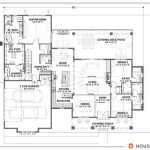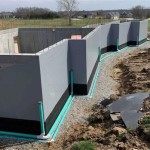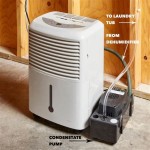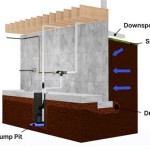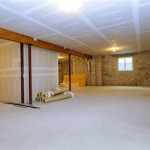When to Use a Dehumidifier in Your Basement
A damp basement can lead to a variety of problems, from mold and mildew growth to musty odors and even structural damage. While there are a number of ways to mitigate moisture in a basement, one of the most effective is to use a dehumidifier.
Dehumidifiers work by removing excess moisture from the air, lowering the relative humidity level. This can help to prevent mold and mildew growth, as well as reduce musty odors and improve air quality. Dehumidifiers can also help to prevent structural damage by reducing the risk of wood rot and other moisture-related issues.
There are a few key factors to consider when deciding whether or not to use a dehumidifier in your basement. These include:
- The relative humidity level in your basement: The ideal relative humidity level for a basement is between 40% and 50%. If the relative humidity level in your basement is consistently higher than 50%, then a dehumidifier may be necessary.
- The presence of moisture problems: If you notice any signs of moisture problems in your basement, such as mold or mildew growth, musty odors, or water damage, then a dehumidifier may be able to help.
- The size of your basement: The size of your basement will determine the size of dehumidifier that you need. A small basement may only require a small dehumidifier, while a large basement may require a larger, more powerful model.
If you decide that a dehumidifier is right for your basement, there are a few things to keep in mind. First, choose a dehumidifier that is the right size for your basement. A dehumidifier that is too small will not be able to effectively remove enough moisture from the air, while a dehumidifier that is too large will be unnecessarily expensive and may use more energy than necessary.
Second, place the dehumidifier in a central location in your basement. This will allow it to circulate air and remove moisture from all areas of the space.
Third, empty the dehumidifier's water tank regularly. If the water tank is full, the dehumidifier will not be able to function properly.
Finally, monitor the relative humidity level in your basement regularly. Once the relative humidity level reaches the ideal level, you can turn off the dehumidifier until it is needed again.
By following these tips, you can use a dehumidifier to effectively remove excess moisture from your basement and create a more comfortable and healthy environment.

How To Choose A Basement Dehumidifier Frontier Foundation Crawl Space Repair Press Release

Use A Basement Dehumidifier To Make Your Comfortable

Troubleshooting A Dehumidifier That S Not Working How To Handle Nonfunctional Or Ineffective Basement

What Is The Best Basement Dehumidifier Reviews

Dehumidifier Installation In Wisconsin Basement Dehumidifiers

Save Time With A Diy Self Draining Dehumidifier The Family Handyman

When To Run Dehumidifier In Basement Check Out These 6 Alarming Signs

When To Use Dehumidifier In Basement Best Practices

How To Duct Your Dehumidifier Sylvane

Should A Dehumidifier Run Constantly 24 7 In Basement All The Time
See Also

